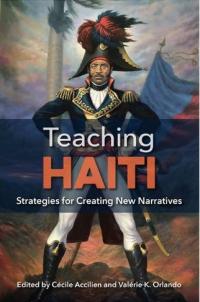Foreign language studies are overlooked. A mandate would change that.
After spending a summer immersed in Jaipur, India, one University of Maryland student argues that language learning isn’t just a personal skill—it’s a global necessity.


Research in the School of Languages, Literatures and Cultures is interdisciplinary and vibrant.
Faculty and graduate students pursue research in numerous fields of study.
What can we still learn from Sergei Eisenstein? Long valorized as the essential filmmaker of the Russian Revolution and celebrated for his indispensable contributions to cinematic technique, Eisenstein’s relevance to contemporary culture is far from exhausted. In Movement, Action, Image, Montage, Luka Arsenjuk considers the auteur as a filmmaker and a theorist, drawing on philosophers such as Georg Wilhelm Friedrich Hegel and Gilles Deleuze—as well as Eisenstein’s own untranslated texts—to reframe the way we think about the great director and his legacy.
Focusing on Eisenstein’s unique treatment of the foundational concepts of cinema—movement, action, image, and montage—Arsenjuk invests each aspect of the auteur’s art with new significance for the twenty-first century. Eisenstein’s work and thought, he argues, belong as much to the future as the past, and both can offer novel contributions to long-standing cinematic questions and debates.
Movement, Action, Image, Montage brings new elements of Eisenstein’s output into academic consideration, by means ranging from sustained and comprehensive theorization of Eisenstein’s practice as a graphic artist to purposeful engagement with his recently published, unfinished book Method, still unavailable in English translation. This tour de force offers new and significant insights on Eisenstein’s oeuvre—the films, the art, and the theory—and is a landmark work on an essential filmmaker.
Read More about Movement, Action, Image, Montage: Sergei Eisenstein and the Cinema in Crisis
Barcelona: Anthropos, 1994. 463 p. ISBN 84-7658-438-5
This book presents a new history of German film from 1980-2010, a period that witnessed rapid transformations, including intensified globalization, a restructured world economy, geopolitical realignment, and technological change, all of which have affected cinema in fundamental ways. Rethinking the conventional periodization of German film history, Baer posits 1980-rather than 1989-as a crucial turning point for German cinema's embrace of a new market orientation and move away from the state-sponsored film culture that characterized both DEFA and the New German Cinema. Reading films from East, West, and post-unification Germany together, Baer argues that contemporary German cinema is characterized most strongly by its origins in and responses to advanced capitalism. Informed by a feminist approach and in dialogue with prominent theories of contemporary film, the book places a special focus on how German films make visible the neoliberal recasting of gender and national identities around the new millennium.
This book explores modern political and intellectual movements to protect local languages and cultures in the Sinophone world. The first half of the twentieth century saw East Asia-wide pressure to suppress and erase local languages in favor of enforcing national and colonial languages. This book analyzes language activism in Japan-occupied Taiwan, British Hong Kong, and Northwestern China by situating it in a pan-regional anti-colonial consciousness that sought to protect indigeneity from nationalism and imperialism.
Jessica Adams, Alessandra Benedicty-Kokken, Anne M. François, Régine Michelle Jean-Charles, Elizabeth Langley, Agnès Peysson-Zeiss, John D. Ribó, Joubert Satyre, Darren Staloff, Bonnie Thomas, Don E. Walicek, Sophie Watt

This volume is the first to focus on teaching about Haiti’s complex history and culture from a multidisciplinary perspective. Making broad connections between Haiti and the rest of the Caribbean, contributors provide pedagogical guidance on how to approach the country from different lenses in course curricula. They offer practical suggestions, theories on a wide variety of texts, examples of syllabi, and classroom experiences. Teaching Haiti dispels stereotypes associating Haiti with disaster, poverty, and negative ideas of Vodou, going beyond the simplistic neocolonial, imperialist, and racist descriptions often found in literary and historical accounts. Instructors in diverse subject areas discuss ways of reshaping old narratives through women’s and gender studies, poetry, theater, art, religion, language, politics, history, and popular culture, and they advocate for including Haiti in American and Latin American studies courses.
Read More about Teaching Haiti: Strategies for Creating New Narratives
Karine Bertrand
Co-edited with Karine Bertrand (Queen’s University, Kingston, Canada), this special issue focuses on the tensions between local, national and transnational as they are expressed, and shape Québec cinema and (new) media since 2000. Re-examining the role of nationalism within Québec evolving culture, exploring increasingly diverse and inclusive representations of Québec, and constantly redefining what it means to be "Québécois," Québec cinema and (new) media are evolving under the influence of new global tendencies while remaining deeply preoccupied with defining and redefining itself.
Read More about The Transnationalism of Québec Cinema and (New) Media